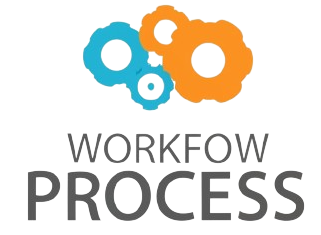Large Language Models (LLMs) like GPT-4 have transformed how we interact with technology, impacting numerous industries and daily activities. These AI systems, trained on massive datasets, are capable of understanding and generating human-like text, making them incredibly versatile. In this article, we will explore some of the most common real-world use cases of LLMs, illustrating not just their theoretical capabilities but how they are being applied to solve practical problems. From enhancing customer service to supporting creative processes, LLMs are reshaping workflows and user experiences across sectors. By diving into concrete examples and practical scenarios, we aim to provide a clear understanding of why LLMs have become indispensable tools in today’s tech landscape.
Enhancing customer service and support
One of the earliest and most impactful applications of LLMs is in customer service, where they serve as intelligent virtual assistants and chatbots. These models can understand customer queries, provide relevant responses, and even handle complex issues by drawing on vast stores of information.
For example, a telecom company uses an LLM-powered chatbot to handle thousands of customer interactions daily. Instead of waiting for human agents, customers get instant answers about billing, service outages, or plan upgrades. The LLM interprets natural language questions, detects sentiment, and routes complicated cases to human representatives, improving efficiency and satisfaction.
Such implementations reduce waiting times and operational costs while maintaining high-quality support—benefiting both companies and customers alike.
Automating content creation and editing
LLMs are also widely adopted in content-driven industries such as marketing, journalism, and publishing. They assist in generating articles, advertisements, social media posts, or even coding scripts, all with minimal human intervention.
Take a marketing firm that uses an LLM to create draft versions of blog posts or social media updates. The AI produces contextually relevant and engaging text tailored for specific audiences. Writers then refine this content, significantly speeding up the creation process. Additionally, LLMs provide valuable editing assistance by suggesting improvements in grammar and style or ensuring content meets the desired tone.
This integration allows creative teams to focus on strategy and storytelling rather than starting from scratch or fixing errors.
Facilitating language translation and accessibility
Language barriers are a major challenge in global communication. LLMs enhance translation tools by enabling more accurate, fluent, and context-aware translations than traditional methods. They also improve accessibility for people with disabilities through voice assistants and personalized reading aids.
Consider an international nonprofit organization deploying an LLM-based translation system to communicate program details to local communities in multiple languages. The model doesn’t just translate words verbatim; it adapts messages to cultural nuances, ensuring clarity and engagement. Similarly, visually impaired users benefit from LLMs embedded in screen readers that offer better comprehension through summarization and natural-sounding speech synthesis.
These advancements promote inclusivity and cross-cultural understanding worldwide.
Driving decision-making and data analysis
Beyond language tasks, LLMs assist in interpreting and summarizing large amounts of data, helping businesses and researchers make informed decisions faster. By extracting key insights from reports, emails, or research papers, these models reduce the cognitive load on professionals.
For instance, a financial services firm uses an LLM to analyze market news and internal communications, generating concise summaries and highlighting potential risks or opportunities. Investment analysts then use these outputs to focus their expertise on strategy rather than information gathering.
This approach not only boosts productivity but also supports more timely and accurate decision-making in competitive environments.
| Use case | Industry example | Practical benefit |
|---|---|---|
| Customer service | Telecom chatbot handling 10,000+ queries daily | Reduced wait time; operational cost savings |
| Content creation | Marketing firm generating blog drafts | Faster content turnaround; improved writer focus |
| Translation and accessibility | Nonprofit translating materials for multilingual outreach | Enhanced clarity; increased cultural relevance |
| Data analysis | Financial firm summarizing market intelligence | Quicker insights; better decision-making |
In conclusion, large language models are no longer confined to experimental AI labs; they are actively embedded in everyday technologies that power communication, creativity, and business operations. From revolutionizing customer service to making content creation more efficient, LLMs excel at bridging gaps between human language and machines. Their ability to interpret, generate, translate, and analyze text in nuanced ways opens new possibilities across various domains. As these models continue to evolve, we can expect even deeper integration into workflows that require understanding and generating language effectively. Recognizing these use cases helps businesses and individuals harness LLMs’ potential thoughtfully and strategically, unlocking benefits that drive innovation and improved experiences.
